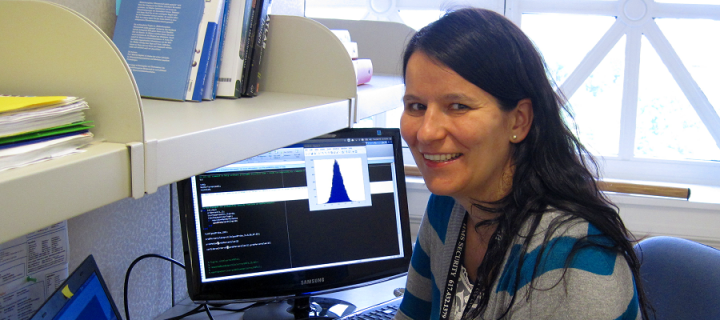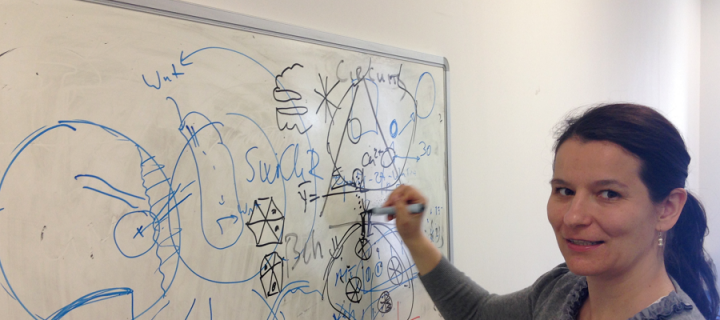Melanie Stefan and understanding learning and memory
Melanie Stefan is investigating what happens within nerve cells when we learn and remember.
What are you currently working on?

I am interested in understanding learning and memory using computational tools. My lab is especially interested in what happens within nerve cells, at the molecular level, when we learn and remember something. We work on building computer models of those events.
These models help us understand how learning and memory is supposed to work, and they also allow us to simulate what changes under conditions of disease, ageing, or medication.
More recently, I have also become interested in “zooming out” and using computational methods to understand how students learn and how we can understand and support their learning.
What do you hope will come out of your research?
As a member of the Patrick Wild Centre, I am especially interested in understanding how the molecular and cellular mechanisms underlying learning and memory are different in individuals with intellectual disabilities and autism spectrum disorders.
Computer models can be a useful tool for collecting experimental findings into one coherent picture. They can also be used for simulations to test possible medical interventions for effects and possible side effects. In the long run, I hope my models will make a difference to our understanding of learning and memory, as well as to people's health and quality of life.
How did you get here?
After school, I could not quite decide whether I wanted to study maths or biology, so I decided to give both a try. Luckily, it turned out that they could be combined, and so I did a PhD in Computational Biology at the European Bioinformatics Institute in Cambridge in the lab of Nicolas Le Novère. This is where I first got interested in modelling the molecular basis of learning and memory. I further pursued this interest for my postdoctoral research in the Kuroda lab at the University of Tokyo and the Kennedy lab at the California Institute of Technology.
After that I grew curious about what all that meant for how individuals learn, so I embarked on a Curriculum Fellowship at Harvard Medical School, which gave me the opportunity to get teaching experience and also get acquainted with methods in Medical Education Research.
Joining the University of Edinburgh in 2015 has allowed me to pursue both strands of my research.
Who are you collaborating with?

Since Edinburgh is such a neuroscience hub, coming here has opened a lot of new opportunities for collaboration. I am especially excited about being part of a collaboration between the Patrick Wild Centre here in Edinburgh and the Centre for Brain Development and Repair (CBDR) in Bangalore, India.
This project is a large-scale multidisciplinary effort to understand the mechanisms behind neurodevelopmental disorders. It includes the study of biochemistry, electrophysiology and behaviour in rat models of nine neurodevelopmental disorders and in cell culture.
Together with Prof Upinder Bhalla and his team at CBDR we are working on the computational side of this project by building a comprehensive model of neuronal signalling that can be used to simulate healthy conditions and various neurodevelopmental disorders.
Tell us something about you that might surprise us.
I was hired as an Edinburgh-Zhejiang lecturer. This means that my teaching appointment is within the Dual Award Honours degree program at the University of Edinburgh (UK) and Zhejiang University (China), which is scheduled to start in the fall. So, I will be dividing my time between doing research in Edinburgh and teaching in Hangzhou. My colleagues and I have even started taking Chinese lessons, which is quite a lot of fun.

